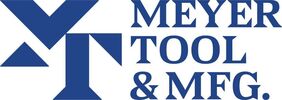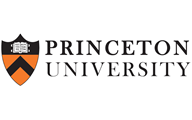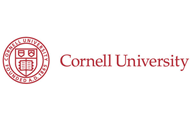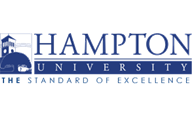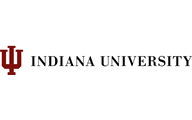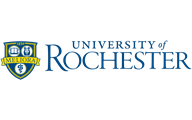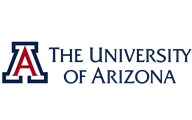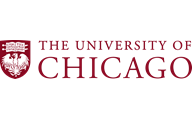Call: 708-425-9080
Research University Customers
|
The faculty and students of the Physics Department engage in theoretical and experimental research that spans most of the central topics of modern physics. We have substantial groups of people working in the areas of theoretical and observational cosmology, theoretical and experimental condensed matter physics, experimental high-energy physics, theoretical particle physics and string theory, experimental atomic and nuclear physics, mathematical physics and, finally, biological physics. The department has decades-old traditions of excellence and leadership in the core areas of fundamental physics and it is also rapidly building strength in newer areas, such as biological physics and materials science. In the newer areas, interaction between Physics and other departments is critical and major university-supported interdisciplinary initiatives provide a strong framework for this cooperation.
|
|
Cornell accelerator physicists pursue a broad range of topics in accelerator science and technology, from the operation of the on-campus Cornell Electron Storage Ring, also known as CESR, to the construction of an innovative new x-ray lightsource and the design and construction of future high energy colliders.
In operation for over 25 years, CESR has been a world class collider for particle physics and is now used as a test accelerator for components of the planned 30 km long International Linear Collider. The site of numerous innovations in accelerator technology, its presence on-campus provides a unique opportunity for students to “drive” an accelerator, test their ideas and learn about nonlinear beam dynamics. |
|
The Department of Physics offers world-class leadership in education and research in physics. The primary goal of the department is to provide the undergraduate major in physics with a quality education leading to the Bachelor of Science degree; the graduate major in physics leading to the Master of Science and/or the Doctor of Philosophy degrees; the non-major with course work in physics that meets the requirements for their major or minor degree program or that satisfies general education or elective requirements; and the university and local community with outreach programs.
|
|
The Johns Hopkins Department of Physics and Astronomy research laboratories are well equipped with state-of-the-art tools. What’s more, the research of our faculty is truly global: some of us work at the Large Hadron Collider, the site of the world’s highest energy particle accelerator, at the Advanced Photon Source, the world’s brightest source of light, and with instruments on the Hubble Space Telescope, the world’s premier space observatory. Closer to home, a special undergraduate laboratory sponsored by the Pew Charitable Trusts allows students to perform their own research under the guidance of faculty mentors.
The Center for Astrophysical Sciences (CAS) at Johns Hopkins is the home of more than 75 PhD-level astrophysicists. Using experimental, observational, numerical, and theoretical methods, the scientists in CAS lead research across the entire range of the discipline. Along with members of the nearby Space Telescope Science Institute, we form one of the largest astrophysics communities in the country. |
|
The Indiana University - Bloomington Department of Physics is engaged in cutting-edge research at the forefront of the field - from the study of complex biological systems to experiments on the simple yet mysterious neutrino. Our 40 faculty members are leaders of this research in labs within beautiful Swain Hall on the IU-Bloomington campus and at facilities around the world. One theme is constant in all of this research - the importance of graduate student researchers. As a student in our physics department, you will have the opportunity to be a crucial and integral participant in some of the most exciting experiments in the field.
We conduct research in the following subfields. Both theoretical and experimental approaches are pursued in most of these areas. |
|
The Laboratory for Laser Energetics (LLE) of the University of Rochester is a unique national resource for research and education in science and technology. LLE was established in 1970 as a center for the investigation of the interaction of intense radiation with matter. The National Nuclear Security Administration funds LLE as part of its Stockpile Stewardship Program.
LLE is a unique national resource for research and education in science and technology and a major asset of the University. The Rochester area and the University have a history of innovation that provides a singular environment for LLE within a technologically sophisticated scientific community, resulting in substantial regional economic impact. Established in 1970 as a center for the investigation of the interaction of intense radiation with matter, LLE has a five-fold mission: (1) to conduct laser-fusion implosion experiments in support of the National Inertial Confinement Fusion (ICF) program; (2) to develop new laser and materials technologies; (3) to provide education in electro-optics, high-power lasers, high-energy-density physics, plasma physics, and nuclear fusion technology; (4) to conduct research and development in advanced technology related to high-energy-density physics; and (5) to operate the National Laser Users' Facility (NLUF). |
|
Innovation and discovery often develop at the juncture or overlap between disciplinary fields. The University of Arizona has a long history of interdisciplinary work in the sciences. A desert dust empiricism has led to a search for links between diverse scientific fields through the development, or shared use, of new techniques, as well as through the leveraging of both intellectual and financial resources. Interdisciplinary programs pursue research in their new fields and create the research workers for the future.
The NSF-Arizona Accelerator Mass Spectrometry (AMS) Laboratory has operated as an NSF research and service Facility since 1981. It is jointly operated by the Physics and Geosciences Departments at the University of Arizona, serving as an interdisciplinary hub for a broad range of research and educational activities. During the last five years, 76 students have utilized this facility for their research, leading to 32 Doctoral and 13 Master's degrees completed from various universities. |
|
As a premiere research department, the University of Chicago does world-class research on a broad spectrum of subjects. Below, you will find descriptions of research areas and the faculty involved in them. A distinguishing feature of Chicago's department is our commitment to surmount disciplinary barriers in our pursuit of research goals. This commitment dates back to the Manhattan Project of World War II. At that time, a diverse team from nuclear physics, metallurgy and chemical engineering scored a major success on an urgent national problem. From this effort came the realization that the organization of doctoral education by disciplines was not necessarily optimal for the advancement of knowledge. Thus the university created a network of research institutes, coexisting with the academic departments such as physics. Research is done under the aegis of the Institutes; degrees are granted by the Departments. The initial two institutes involving physicists are now called the Enrico Fermi Institute and the James Franck Institute.
The Enrico Fermi Institute or EFI grew from its initial emphasis on nuclear physics to encompass modern high energy physics, string theory, relativity, astronomy, astrophysics and cosmology. The Institute includes physicists, astronomers and cosmochemists. In the 1980's the EFI gave birth to a fruitful merger of particle physics and the study of the early universe. This unified, cross-disciplinary view of particle physics and cosmology has now become the norm in the wider physics community. At Chicago, it has spawned a new Institute: the Kavli Institute for Cosmological Physics. |
